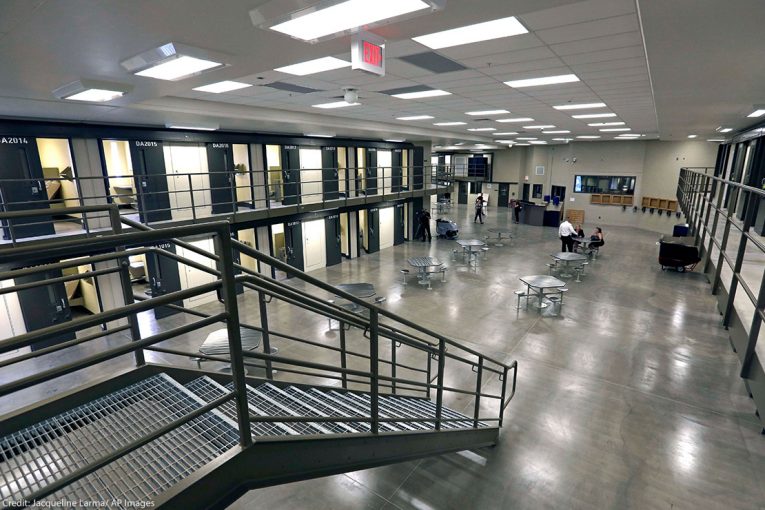

By Ghostwrite Mike and The Mundo Press
CHOWCHILLA, CA – Afflicting young people under the age of 18 at an alarming rate, adverse childhood experiences (ACEs) are so prevalent in our society that former California Surgeon General, Dr. Nadine Burke Harris, created a public education campaign called Number Story to help the public understand how trauma influences health outcomes.
Available to access at Numberstory.org, the program screens and scores predictable outcome data consequences caused by the public health crisis.
We recently attended an interactive three-day “Trauma Talks” workshop at Valley State Prison (VSP), which introduced us to Fritzi Horstman, the progenitor of a revolutionary modality of informative, engaging and empathetic exercises designed to encourage trauma survivors to identify, process and heal from the adverse childhood experiences that can too often metastasize into generational trauma legacies.
Trauma Talks is a 16-part series of self-guided videos and workbook exercises developed by the nonprofit Compassion Prison Project, which helps carceral state residents become trauma-informed self-care providers and peer mentor facilitators.
Becoming informed enables residents to undertake the reconciliation and healing work necessary to intervene in the cycles of generational trauma that are statistically tied to ACEs as indicators of future public health problems.
Studies have found that persons having experienced physical, emotional or sexual abuse, physical or emotional neglect, or who have been exposed to mental illness, domestic violence, divorce, substance abuse, or an incarcerated relative in the home, are 12 times more likely to attempt suicide.
Those who experience four or more of the aforementioned 10 trauma types are 36 times more likely to become an injection drug user and seven times more likely to go to prison. Six or more ACEs can shorten one’s lifespan by up to 20 years.
Raider, the subject of a Netflix documentary who has a film crew following him three times a week throughout the VSP facility covering the daily life of a youth offender, described how “the exercise that had us sitting across from a guy with our eyes closed, for just three minutes, knowing I was being stared at, was way more nerve-wracking for me than being filmed for hours with my eyes open.”
“But,” he added, “it also showed me how uncomfortable I really was in my own skin, as if my body was confessing all these hidden stressors I didn’t even know existed. I needed this workshop. Vulnerability is scary, but essential I think. Fritzi was compelling.”
Another powerful exercise introduced by Horstman’s photographer and facilitator Jayme, first asked participants to walk by one another as they normally would a stranger; then, he asked us to make eye contact as we passed; thereafter, we were asked to shake hands as we passed; and finally, we were asked to embrace each other as we passed—all things men, who do not already know each other, never do in prison.
It caused a complete shift in the emotional tectonic plating of the otherwise normative and isolating behavior that keeps people safe from harm but detached from others. Newly tethered strangers sported contagious smiles, were talking together in small groups and the energy in the space was transformed in ways that led to a more engaging and positive atmosphere.
Dr. Brie Williams, a professor of medicine for vulnerable populations, and co-chair of California Gov. Gavin Newsome’s advisory committee that will help plan the state’s four pillars of the new “Norwegian-style” California Model of rehabilitation in corrections, emphasized the model’s objective of becoming a trauma-informed organization, by describing on the governor’s website “lifting the voices of people who have lived or worked in prisons to imagine a center for healing trauma.”
Horstman’s organization, which operates on grant funding support from the California Department of Corrections and Rehabilitation, works with imprisoned populations, military veterans and law enforcement agencies alike, standing in the gap between authority brokers and the disenfranchised communities they oversee.
Post workshop, Horstman made time for us, describing her mission as a global effort to “intervene in the cycle of generational trauma, spread unconditional love and help the world heal from the harm we inflict and endure by developing empathy.”
We’ve since completed the Trauma Talks self-help curriculum, and formed a VSP resident working group composed of group facilitators and peer mentors who are committed to building a trauma-informed community.
Jazz, a Youth Offender Program Mentor, Merced College student and one of VSP’s first Trauma Talks facilitators, told us “It’s great to see residents buy in around a topic as difficult as childhood trauma. This is difficult terrain. Hopefully we can get together and brainstorm an innovative way to responsibly present this subject matter and engage residents digitally. The Barz Behind Bars creators here think this could be a more impactful program, if made portable and packaged as a podcast. I tend to agree.”
The inbound Rebirth Of Sound music program will deliver to VSP residents a ProTools-based audio curriculum that, if augmented by podcasting tools, could enable such a podcast modality to become developed.
In 2024, the Compassion Prison Project will publish and deploy a “Message To The Youth” anthology to California’s juvenile halls harnessing resident art, poetry and narrative testimonies that center the lived experience of incarcerated Trauma Talks facilitators and workshop participants.
Horstman believes “transformation is possible when we commune and work together to become the healing we seek in the world. We can be the miracle we need simply by allowing our trauma to speak.”
